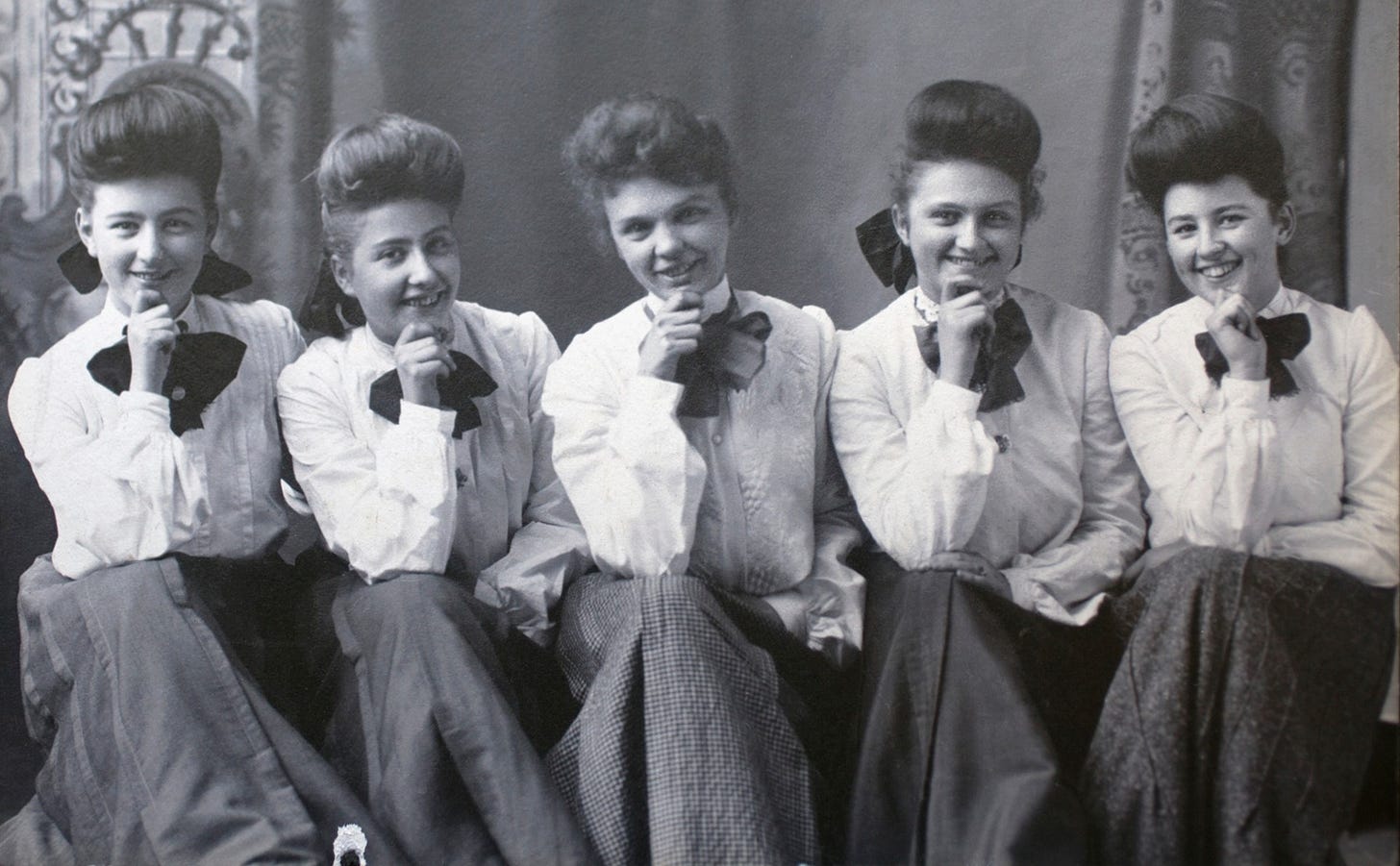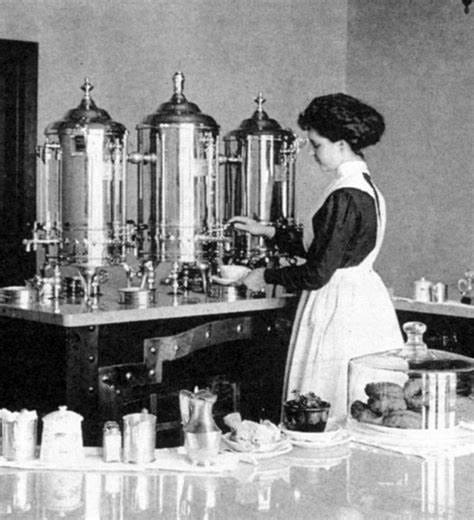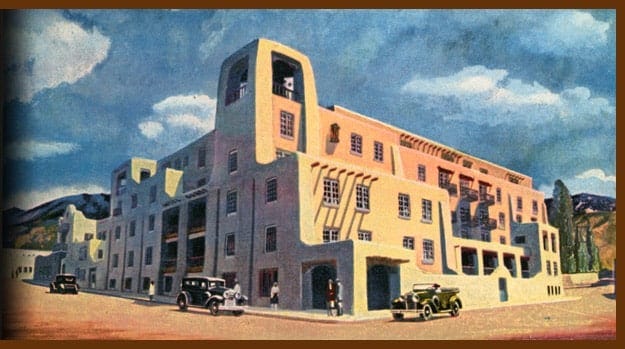Welcome to The Four Corners of the Southwest. My love for travel and the outdoors has inspired me to learn, research, and share interesting information about the American Southwest.
In 1883, Fred Harvey implemented a staff policy that was his greatest impact in civilizing the American West. While bringing his hotels and eating houses West did much to that end, the fact that he created a female workforce known as the Harvey Girls truly had an impact more vast than his contributions to the railroad dining experience. We may take our 21st Century standards and feel concern for these young women brought West. But this unique opportunity gave the women a way to move out of the lives they were stuck in and find independence, self-esteem and opportunity. In addition, bringing hundreds of “good women” West to settle shaped the region’s culture and attitudes.
They used to say there were no “ladies west of Dodge City and no women west of Albuquerque” but Fred Harvey changed all that. He gave the women what they needed: security, income, a place to live where they were not alone, and opportunities to meet prospective suitors through daily contact with passengers and employees of the railway.
Why did Harvey Hire Women?
Originally, Harvey hired only black men to serve the meals in his Harvey Houses as most servers in American restaurants, at the time, were males of African decent. There was a lot of tension between the cowboys who were former confederate soldiers and the African American waiters. After drinking more liquor than they served, the waiters sometimes got into arguments and even fistfights with customers since they weren’t respected. In 1883, Harvey had to fire his entire staff at his Raton house in New Mexico after a drunken brawl. His manager recommended he hire women because they were less likely to get “liquored up” and the patrons will act more civilized around women. This move to hire women essentially reinvented the American workforce and made him the man who invented the waitress.

Bringing the Women West
Since there wasn’t a supply of single, reputable young women west of the Mississippi, Fred Harvey had to advertise in Midwest and East Coast newspapers to find his workforce. The advertisement asked for young women, 18-30 years of age, of good character, attractive and intelligent to apply. Many qualified candidates applied and were sent a rail ticket to Kansas City for an interview. Women who were hired were trained at well-established Harvey Houses before sent to newly established locations.
In 1883 the salary for a Harvey Girl was $17.50 a month plus room, board, and tips.
Why are they Harvey Girls and not Waitresses?
Back in the 1800s, work, with the exception of teaching and nursing, was avoided by all “nice girls”. At the bottom of the work scale, for women was factory work, domestic service, and waitressing. Waitressing was considered inferior even to domestic work. In the East, waitressing was a degrading occupation. In the West, due to the abundance of music and dance halls, the pretty women who served meals to men were thought also to be prostitutes.
The fact that most of the customers in the Harvey Houses were transcontinental passengers and were often wealthy and worldly, Harvey Girls served a better class of customers than a waitress say in a New York café. Fred Harvey ignored that waitressing was at the bottom of the scale and believed that his Harvey Girls would be much more. His high standards for the women ensured they were well-respected.
The Women Were Held to High Standards
The women were required to sign a six-month contract or forfeit half their base pay if they left early. Marriage was usually the reason why a woman left service. They were not allowed to wear make-up or chew gum while working. A curfew of 10 pm was imposed unless a late train was expected. They resided in dormitory-style housing adjacent to the restaurants, where they were supervised by a housemother, who enforced curfews and chaperoned male visits. Each house maintained a “courting parlor,” where the women could entertain prospective husbands without compromising their own or the company’s reputation.
Her job was secure as long as she followed all the rules. She was entitled to a leave of absence at the end of each six-month contract and was given a train ticket home and a meal pass along the way. She was invited back to another contract if she wished, or she could transfer to another location.
Uniforms
To quiet public criticism of single women away from home, Harvey dressed them conservatively, almost like nuns. The uniform was designed to diminish rather than accentuate feminine physical characteristics with plain black skirts, white bibbed aprons, high collared blouses, black stockings and shoes. The uniform mirrored the appearance of Harvey Houses: efficient, clean, and businesslike. If a woman spilled on a uniform, she was required to immediately change into a clean one.
The uniform, introduced in 1883, didn’t change much over fifty years. As time passed skirts became fashionably, a Harvey Girl’s skirt length didn’t change and was always required to be precisely eight inches from the floor. She was to wear no jewelry or makeup. The housemother would often run a damp cloth over a woman’s face to be sure.
Hollywood Loved “The Harvey Girls”
In 1946, a movie named “The Harvey Girls” was released that was based on the 1942 novel of the same name by Samuel Hopkins Adams. The movie starred Judy Garland as one of the Girls and Angela Landsbury as a dancehall girl competing for the male lead’s affection. It includes the Oscar winning song “On the Atchison, Topeka & the Santa Fe”.
IMDb describes the movie as “On a train trip West to become a mail-order bride, Susan Bradley (Judy Garland) meets a cheery crew of young women travelling out to open a "Harvey House" restaurant at a remote whistle-stop.” It’s cute and something my dad and I would have watched together when I was young.
Here's a link to view the movie for free.
Harvey Girls Move On
These women were true pioneers in the sense that they worked outside of the home at a time when few women did so. They traveled west into the unknown, searching for a better life. Women could continue to work in Harvey’s service, or she could choose to marry.
Thousands of Harvey Girls ended their restaurant careers by marrying men in western towns generally of high standing. Afterward, they used their eastern cultural roots to organize civic activities and demand law and order. They were pillars of their communities which would not have been the same if they had not been there.
While I’m very happy to be living in the 21st Century with the opportunities for women that come with it, I’d like to think that I would have had the guts to travel West to see and experience a land that I would probably never see if it wasn’t for the opportunity of being a Harvey Girl.
Please like and share this post to help support my work!
Next Time
In my next post, we will look at a hotel named the La Fonda On the Plaza in Santa Fe, New Mexico. Historically, there has been an inn in that location since the 1600s. In the 1920s the Fred Harvey Company took it over and it became one of his famous Harvey Houses. Robert Oppenheimer, the Father of the Atomic Bomb frequented the bar there as did spies trying to get information about what Oppenheimer was doing in Los Alamos. It’s quite an interesting story!










I loved this one! I've got it scheduld to cross-post on Nov 22.
Another great post, Jan.
My uncle (my mother’s brother) was married to a Native American woman from the Isleta Pueblo outside of Albuquerque. They were married probably around 1952. She was a Harvey Girl. So of course one thing that piqued my interest in regard to your post about the history of the Harvey Girls and most of them coming from the East is I wonder how many were native to the Southwest and further how many were Native American. I will do some more digging to find out but I can tell you that my Aunt Dolores was very proud to have been a Harvey Girl—it may have even been the crowning achievement of her life. My aunt was an Indian Boarding School survivor (as was my own father). No doubt serving among the ranks of the respected women who were Harvey Girls was in stark contrast to her time at Boarding School where she was shamed, abused and deprived of her culture, language, dignity.